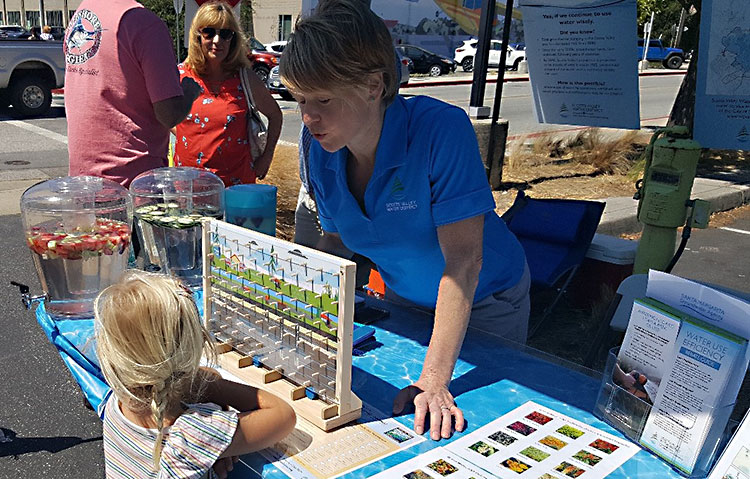Piret Harmon Answers Questions About How COVID-19 Has, and Is, Affecting Business
By Erin K. Allshouse
The Scotts Valley Water District is an essential business, so it hasn’t shut down through the COVID-19 pandemic, but commercial water use declined by 40 percent during Shelter In Place. How does that affect the operating budget?
Have you had to cut hours for employees? Layoffs?
The District has not had to cut hours or reduce the workforce.
How many customers are having trouble paying their bills? Is that an issue?

The District has a Rate Assistance Program that is available to eligible customers and we are also offering payment plans. Only less than 20 customers are currently utilizing these offerings.
Are some employees working from home for their own safety?
No employees are working from home — the type of work that most of us do, does not lend itself very well for conducting it remotely. The customer service lobby has been closed since mid-March and the District offers many online services. We have strict and thorough processes to ensure the health and safety of employees and customers
Did you put projects on hold until revenue rebounds?
The “life cycle” of a typical water infrastructure project is quite long and it is impractical and often impossible to deploy stop-restart tactics. The District uses strategic planning tools and 5-year capital projects cycle that relies on pay-go funding (from current year revenue) as well as repair & replacement reserves and debt issuance when appropriate.
Any idea when revenue will rebound?
We anticipate some impacts to last through next fiscal year (July 2020 – June 2021). Although this global health and economic crises was totally unpredicted, California water agencies are accustomed and therefore somewhat prepared to frequent variability of the climate conditions that is always accompanied by demand fluctuations and revenue variability.
What changes have you made due to COVID-19?
We temporarily suspended activities requiring direct customer contact and will implement appropriate protective measures when reactivate them. The District swiftly transitioned all meeting, including Board meetings, to virtual format and is planning to continue with digital Board meetings after the Covid-19 restrictions are lifted. Internally, we have set in place detailed procedures to ensure the health and safety of employees.
How do you comply with the social distancing requirement for customers in your office?
The office lobby has been closed since mid-March. We are planning to open it on July 6 and are making sure that all relevant and necessary safety measures are in place: 6ft distance, masks, hand sanitizer etc.
Have visits to the office dropped?
Having the in-person service temporarily suspended has allowed the District to promote the online services and solutions: start/stop service, bill payment, rebate application and usage tracking.
SV Water is using software from a 2009 SF startup with $13 million called WaterSmart Software to help customers understand and manage their water use.
Why this software?
WaterSmart customer engagement portal is only one (the last) component of a complex system and enables the customers to view, manage and understand their water use. The District evaluated several vendors and choose WaterSmart as the best fit considering the features, functionality, ease of use, and administrative structure.
The main elements of the Advanced Metering Infrastructure (AMI) are Orion Cellular LTE endpoints that are connected to the water meter in the existing meter boxes, capture readings and communicate with the encoder.
Did you consider the 2015 Santa Cruz startup Buoy Labs to help people manage household water use?
Buoy Labs offers a stand-alone add-on solution for those people who want to understand their indoor water use on more granular level. It requires installing an additional meter and connecting it to the local wifi network. It is more costly and from a water system perspective offers less value to the District.
What’s the expected payback with WaterSmart? Months/years for the cost of software to start generating savings? When might there be enough data to say how well it is working?
As mentioned earlier, WaterSmart is only the last layer of enabling the customers to manage their water use. The foundational component (i-Meter network) is much larger investment than the customer engagement portal that costs about $2.50 per customer per year. It has already paid off by allowing the District and the customers to detect leaks much quicker (within 24 hrs vs 60 days).
In fiscal year 2019 the total amount of water lost through leaks tracked by Leak Adjustment Program was 7 million gallons. In fiscal year 2020, the same number is projected to be about half of that or 3.5 million gallons.